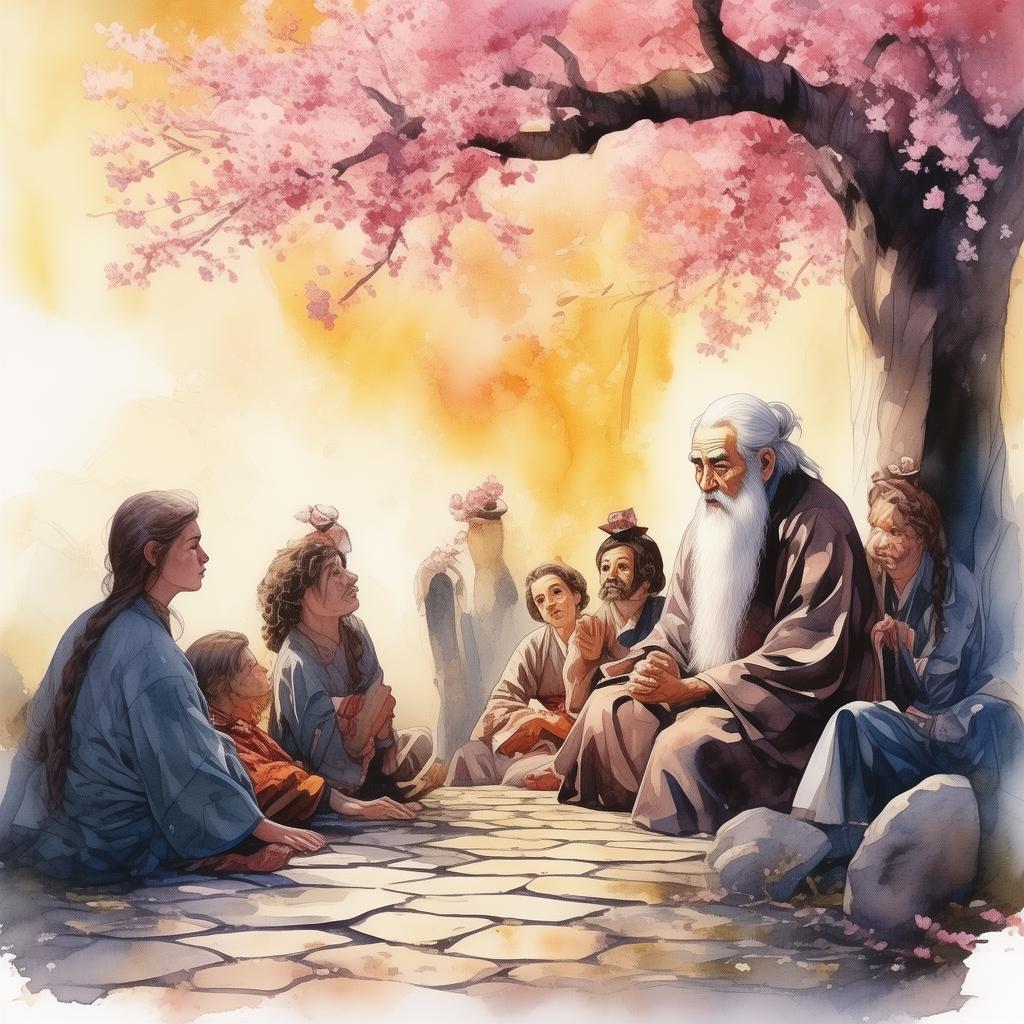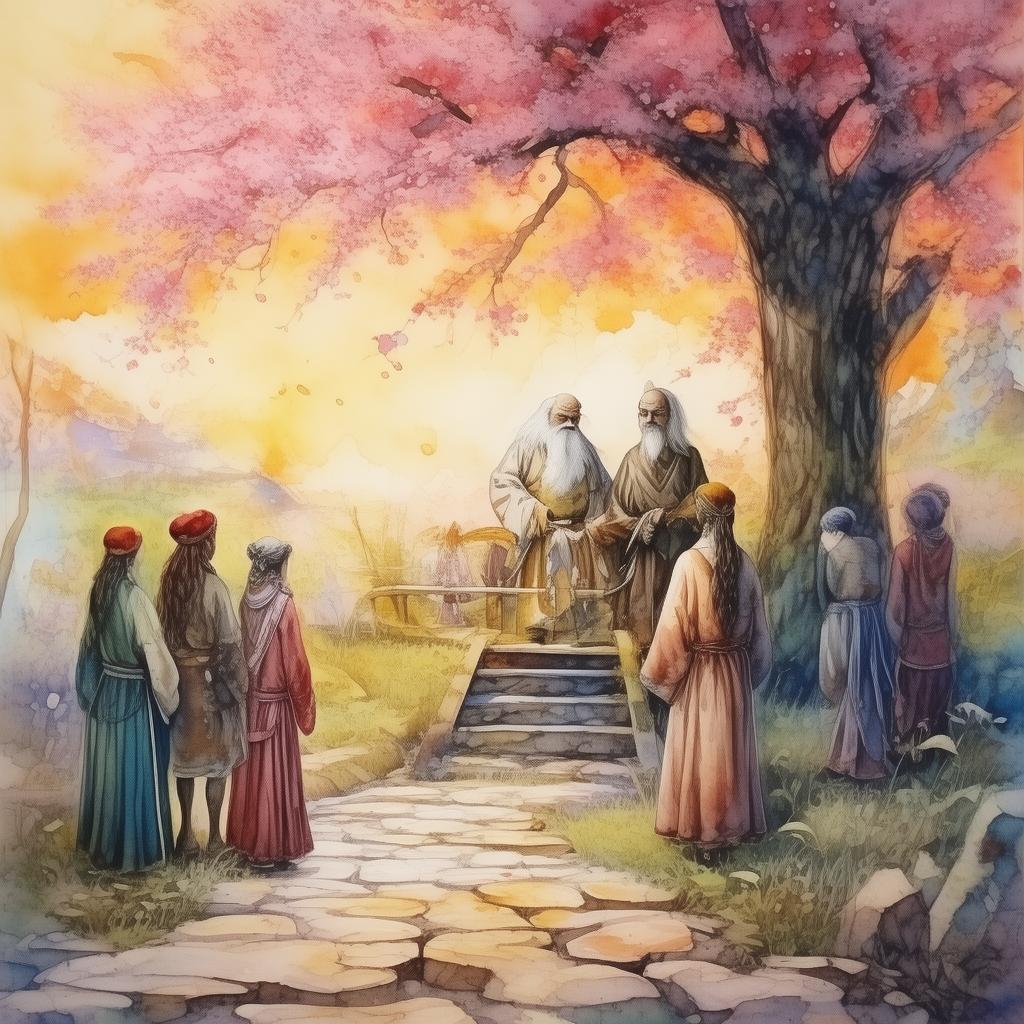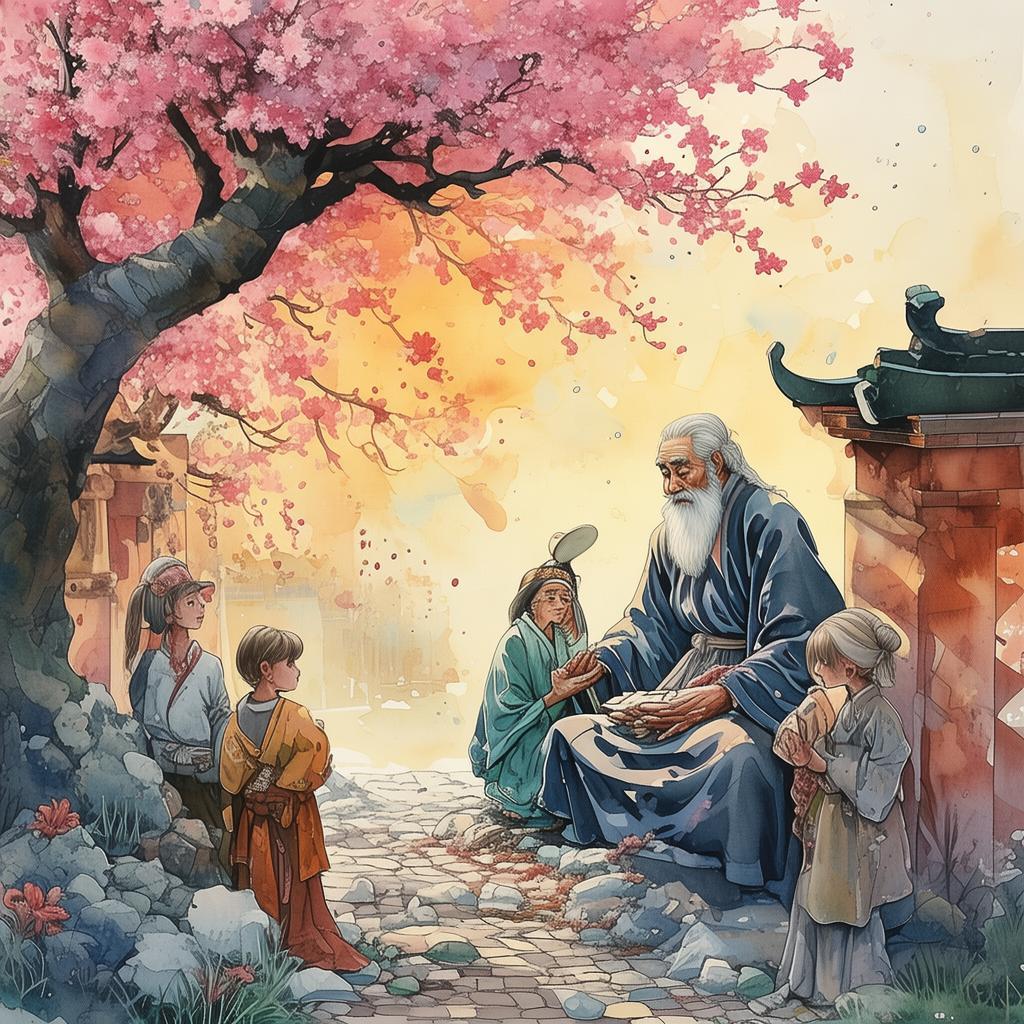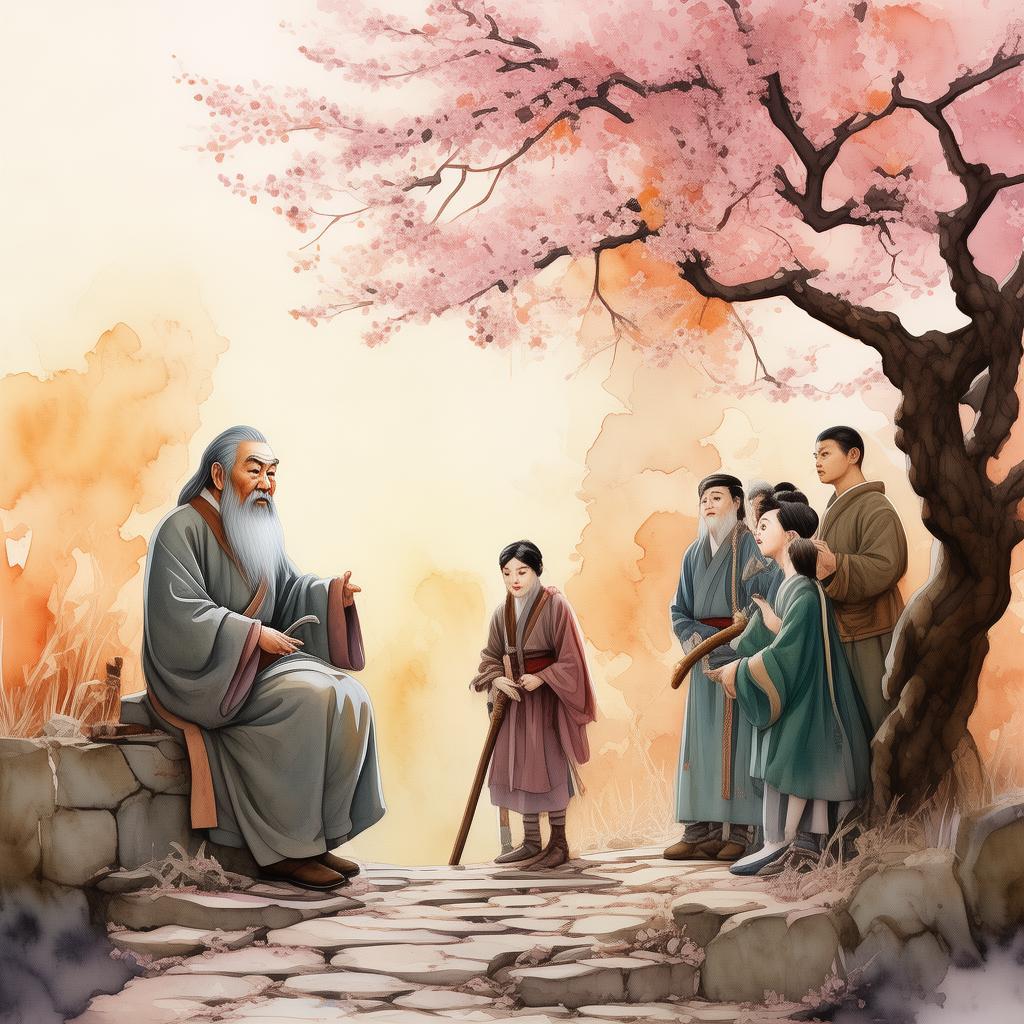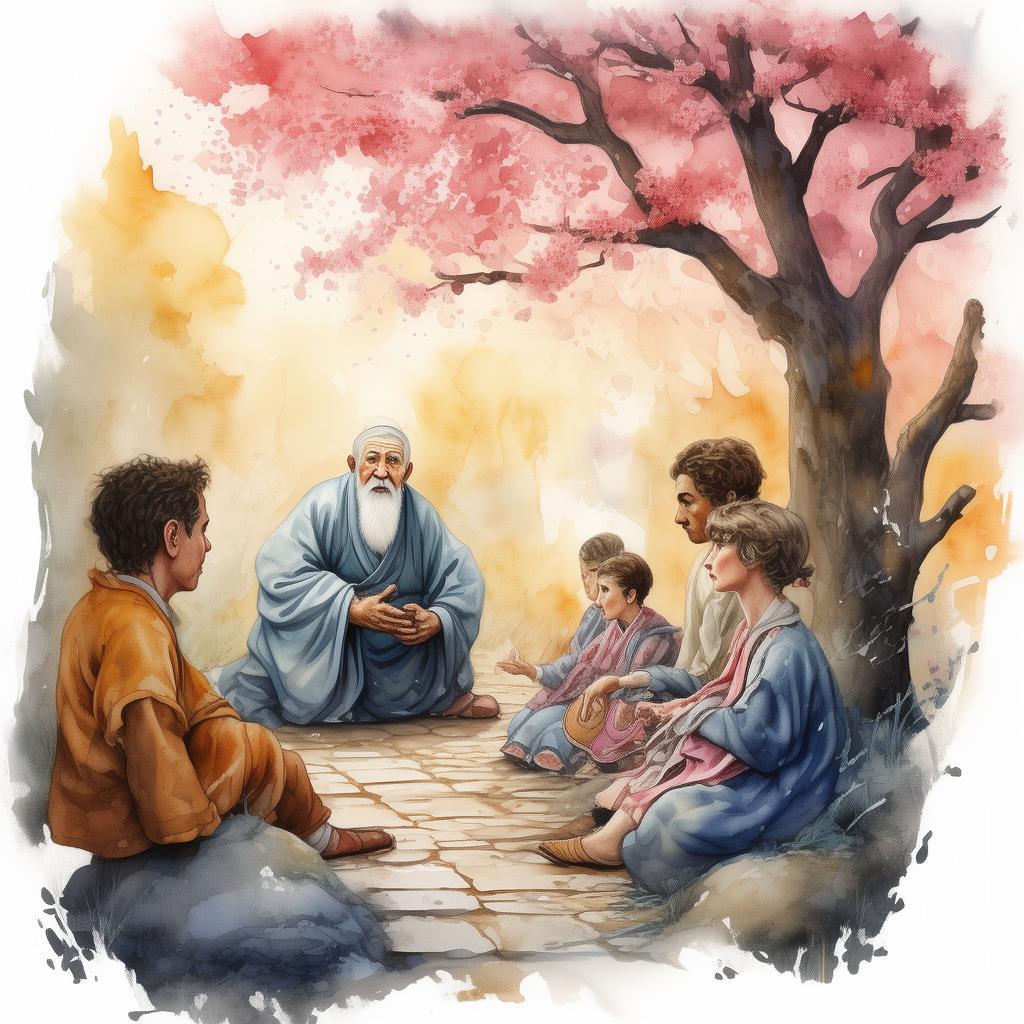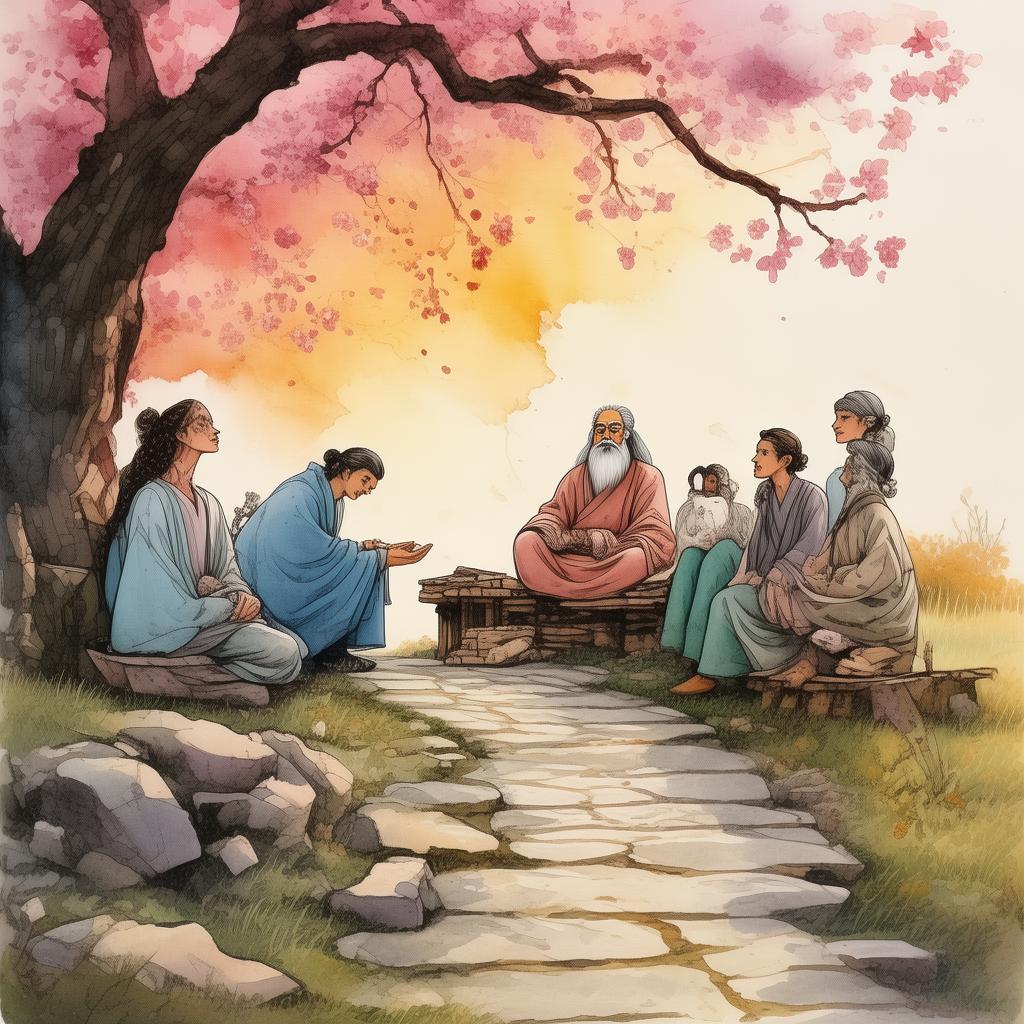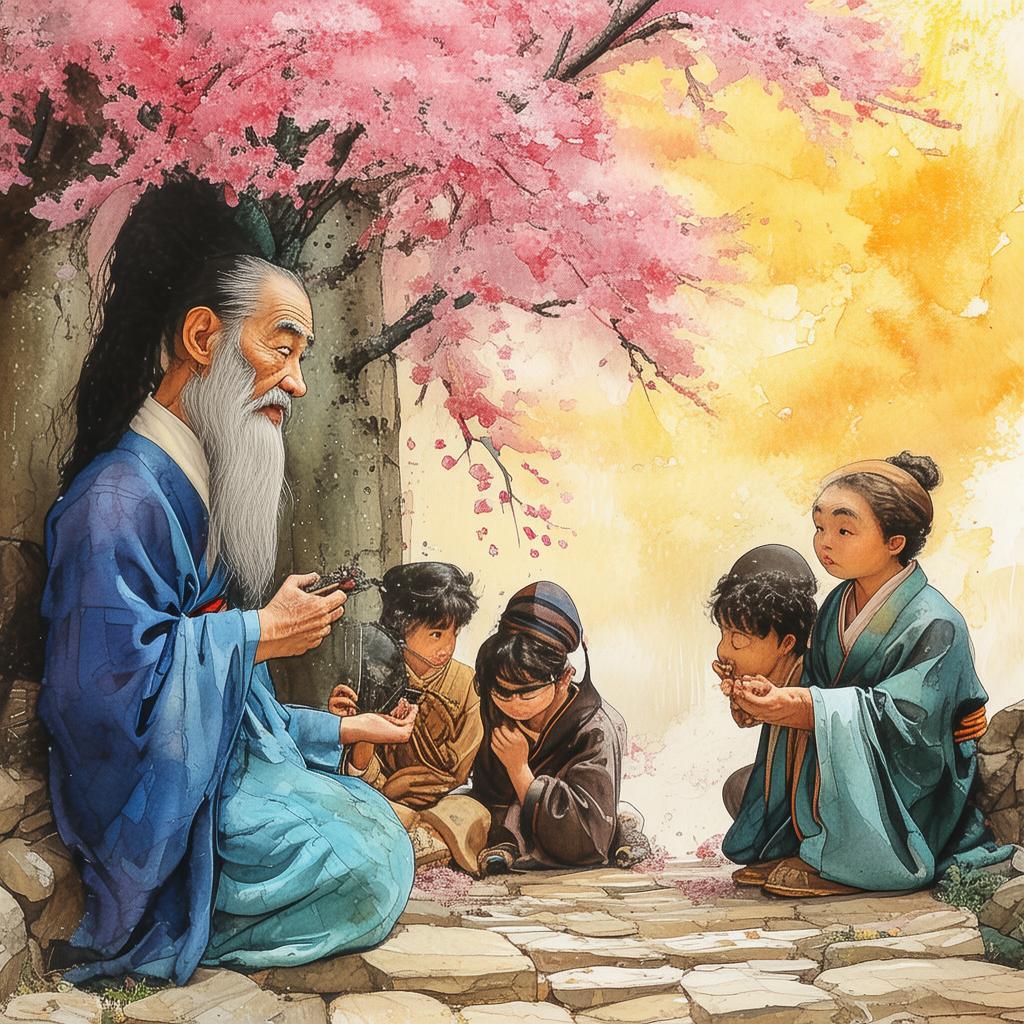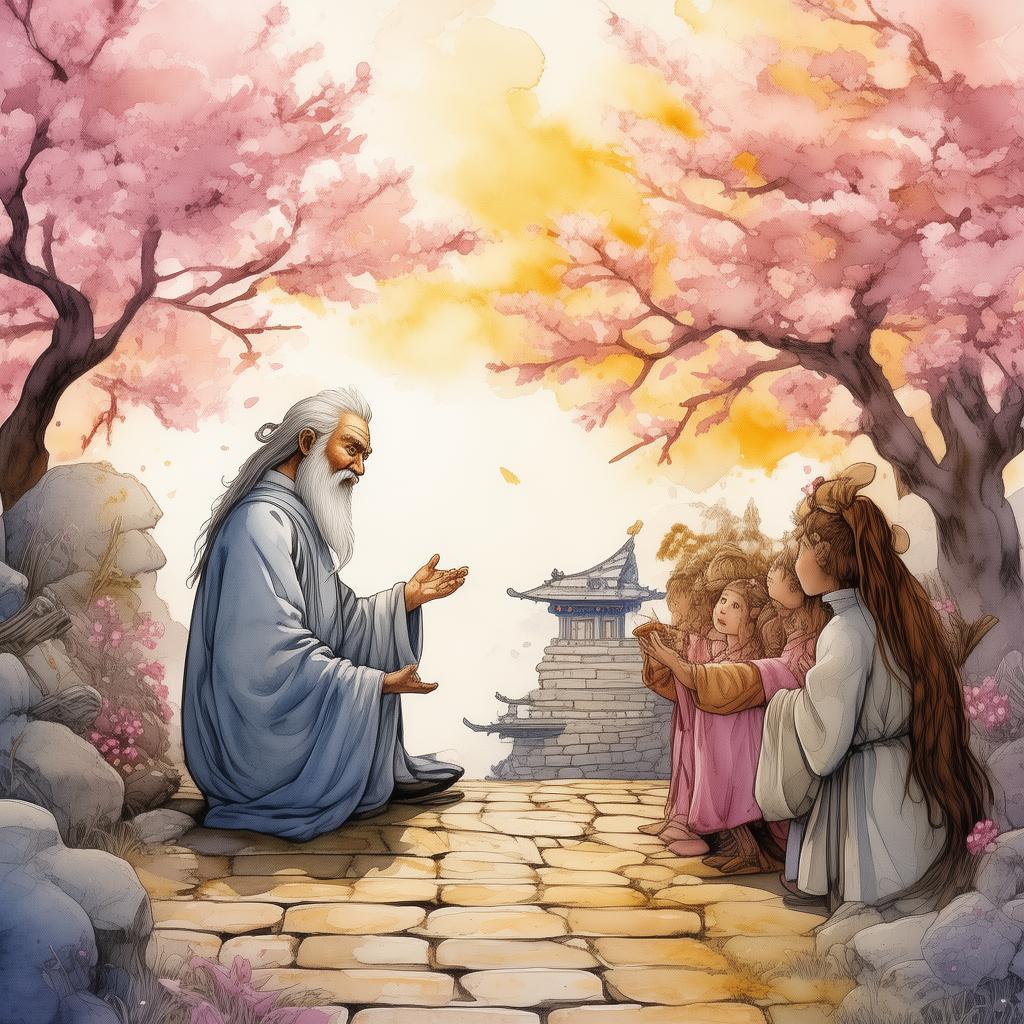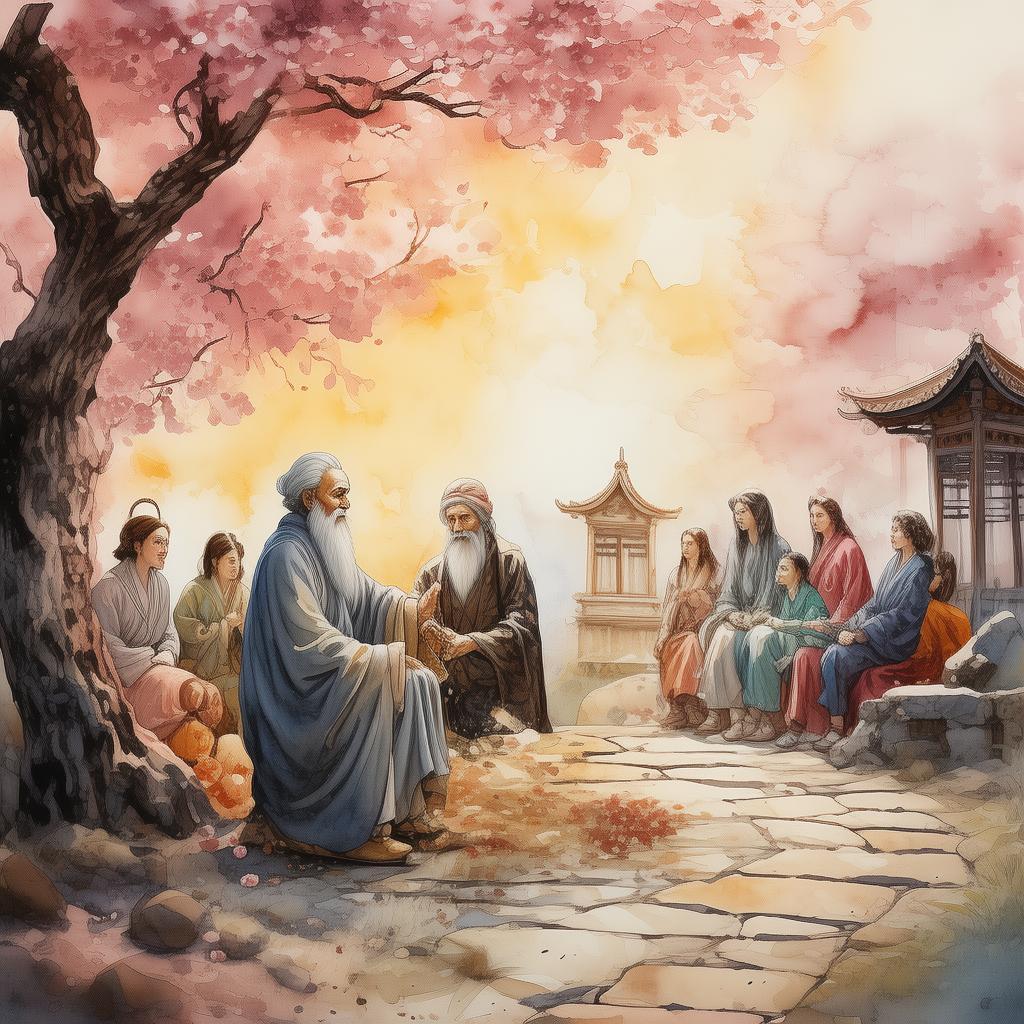Woven Shadows: The Loom of Rebellion
In the heart of ancient China, a secret society known as the Outcasts thrived, their looms silent yet humming with the potential of rebellion. Among these Outcasts was Li, a master weaver whose fingers danced over the silk loom with a fluidity that belied the dangerous nature of their craft. Each thread they wove was a symbol of their defiance against the oppressive regime that controlled the precious silk trade.
The Robe of the Outcasts was not just a garment; it was a symbol of unity, resilience, and the silent rebellion that simmered beneath the surface of the empire. The robe was made from the finest rebel silk, a fabric that spoke of their defiance in every shimmering thread. It was said that the robe had the power to grant its wearer the ability to see through deception, a gift that could turn the tide of the rebellion.
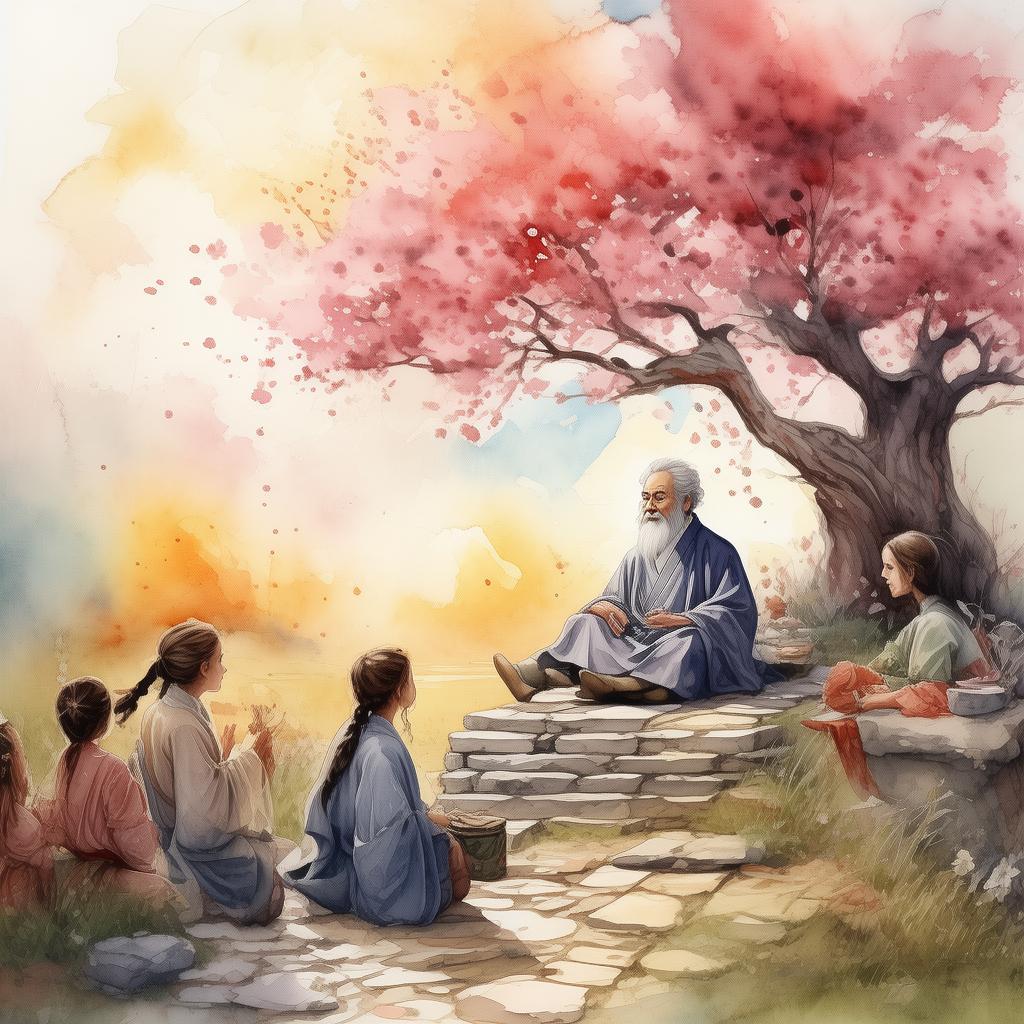
One day, a young and ambitious silk merchant named Ming arrived in the Outcasts' village. Ming was a man of vision, and he saw the potential in the Outcasts' silk. He offered to help them improve their trade, promising to bring their silk to the courts of the emperor. But there was a catch. To do so, he needed the Robe of the Outcasts, a piece of the rebellion that was sacred to them.
Li, torn between the promise of freedom and the loyalty to their cause, approached the council of the Outcasts. The council, led by the wise and elderly Master Hu, knew the danger that Ming's offer posed. But they also saw an opportunity to spread their message far and wide. After much deliberation, they decided to trust Ming, but with a price. The robe could only be given to him if he agreed to use his influence to help the Outcasts and not the empire.
Ming left the village with the Robe, and the Outcasts held their breath. As weeks turned into months, Ming's tales of the robe's power grew, stirring the hearts of the common people. It was said that the robe had protected Ming from the emperor's spies, and it was even rumored that it had granted him the ability to see through the lies of the court.
Li, however, felt a gnawing sense of betrayal. He had seen Ming's true intentions firsthand—the merchant had been using the robe's power to gain favor with the emperor, not to help the Outcasts. Desperate to stop Ming, Li set out on a perilous journey to retrieve the robe.
As Li traveled through the empire, he encountered the harsh realities of the silk trade. He saw the back-breaking labor of the silk workers, whose lives were little more than a thread in the vast tapestry of the empire. He witnessed the greed of the nobles, who cared not for the suffering of the common folk, only for their silk robes and their silk-embroidered banners.
Li's journey led him to the imperial court, where he finally confronted Ming. Ming, now a powerful figure in the court, denied any wrong-doing. But Li's keen eyes saw through the lies. With a swift and decisive move, Li stripped the robe from Ming and began to weave the truth into the silk, using his knowledge of the loom to create a tapestry that revealed Ming's treachery.
The court was thrown into chaos. The emperor, who had grown to rely on Ming's reports, now found his trust in his advisors shattered. Ming, exposed, was swiftly removed from power, and the empire was left to face the consequences of his actions.
The Outcasts, seeing the robe's power once again, realized that the fabric of their rebellion was strong enough to withstand the emperor's wrath. They continued to weave their rebellion, their silk looms now a beacon of hope for those who yearned for change.
In the end, Li returned the robe to the Outcasts, a testament to the strength of their cause. And while the empire may have remained unchanged, the Outcasts had shown that even the finest silk could not keep the flame of rebellion from catching light. The loom of rebellion was alive, and it was weaving a future where the threads of freedom and justice might one day become the dominant pattern.
The Robe of the Outcasts had not only been a symbol of their defiance but also a reminder of the power of truth and the resilience of the human spirit. In the shadows of the looms, the Outcasts continued to weave a story that would echo through the ages.
✨ Original Statement ✨
All articles published on this website (including but not limited to text, images, videos, and other content) are original or authorized for reposting and are protected by relevant laws. Without the explicit written permission of this website, no individual or organization may copy, modify, repost, or use the content for commercial purposes.
If you need to quote or cooperate, please contact this site for authorization. We reserve the right to pursue legal responsibility for any unauthorized use.
Hereby declared.
